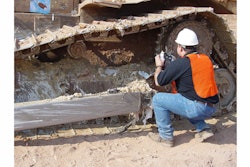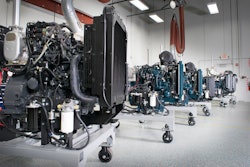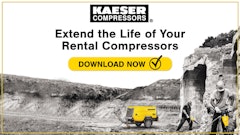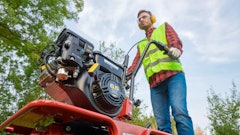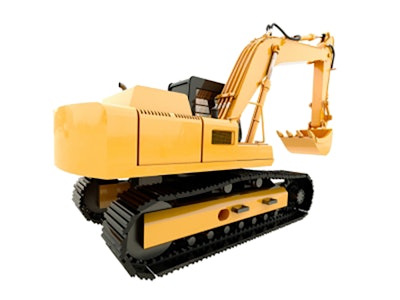
“Brad, what about changes in the equipment we’re looking at buying over the next few years. It seems like we’re going to be paying more not only in actual equipment purchase cost but also in the cost to maintain the equipment. What should we know before making some capital decisions?”
The question above is a real question; one that is asked by most of the contractors I know. For many contractors, the last few years have been a frustrating time for equipment purchasing and maintenance. Regulatory challenges have brought about new equipment and vehicles that brag of greater fuel efficiency and performance — but what have these changes meant to contractors?
Survey findings and interviews conducted by the Center for Construction Innovation and Development (CCID) with construction leaders and equipment manufacturers and dealers point to some interesting projections for the next decade. This article will take a look at some of those results about construction equipment as it relates to the contractors who are buying and using them in their operations.
The impact of Tier 4 on contractors
Established in 2004, Tier 4 is the federal government’s next step in improving the efficiency of vehicles and engines in the country. For the construction owner and senior leader this initially means greater fuel efficiency along with greater upfront purchasing costs. Further, the new equipment (and vehicles) has much more sophisticated equipment as part of its makeup.
As one equipment leader expressed, “Tier 4 machines have more technology pumped into them than what was used in the original moon landing.”
Interviews conducted with contractors, equipment manufacturers and dealers uncovered a large amount of uncertainty with much of the new equipment built today. One equipment sales professional observed, “The exhaust system is completely different; companies just haven’t been around them enough to know what they are getting into yet.”
Aside from higher purchasing costs, what do these changes really mean for the construction contractor? One obvious benefit is the promise of greater fuel efficiency that will potentially lower operating costs. Additionally, health and environmental benefits can be expected from using machines that have higher-rated emissions standards.
The negative aspect of the new equipment is the unknown maintenance issues and expense that may come about. Greater efficiency and performance does not come without side effects, and new equipment is often much more fragile and complicated than older models. Consider that making many of our company or personal vehicles lighter, part of achieving higher MPG ratings to meet governmental standards, easily explains rising costs to repair the same when damaged.
As one contractor shared during an interview conducted by the CCID, “Huh, the days of pounding out that fender bender are long gone. Now I just have to replace the whole darn bumper. No more putting a little body putty and painting over the side panel; gotta replace that whole piece too.”
Along with new equipment comes the need for contractors to really understand how the equipment operates. It’s just not enough to know how to turn the key but what might have to be done before the ignition is engaged.
As another equipment dealer reflected, “Contractors will want to be VERY sure that their equipment operators know their machines inside and out. Any slight mishap will cause long site delays and heavy costs to fix or replace this new equipment.”
One direct impact for contractors is the need to train workers who will be operating new equipment or vehicles; this will need to become mandatory. While turning all of your workers into mechanics might be overkill, having those who operate your equipment more educated about the entire handling and maintenance of the equipment looks to be an investment worth making.
With all of the challenges associated with the new equipment, contractors might be more interested in leasing new or purchasing used equipment in the coming years. In the past, contractors have preferred to buy new equipment rather than rent. Most equipment dealers, and a surprisingly higher number of contractors all confess that they (contractors) often run their machines “into the ground” in an effort to maximize every dollar they can before buying new equipment.
Another point of interest that manufacturers and dealers of construction equipment realize better than most: The used equipment market will most likely continue to grow as contractors look to work with equipment they know and wait to “ride out the storm” of the unknowns associated with Tier 4 equipment.
In the end, contractors, for primarily economic reasons, will “kick the can down the road” a bit longer to avoid the rising costs of purchasing equipment. Equipment dealers, as a result, are responding to this trend and have been ramping up their used and refurbished sales to meet this increasing market demand.
Recommendations to meeting current and future challenges
Contractors need to first take a serious look at the preventative maintenance programs for equipment going forward. Many may be forced to use older equipment longer than they might have preferred. Educating employees on the value of maintaining equipment will be key. If it’s not already a built-in work process for crews, such a requirement will need to be installed to help maintain existing equipment for as long as is possible.
A side note of importance about maintaining your new equipment involves the cost to maintain your new equipment. Feedback from several construction equipment experts suggests that maintaining the new equipment can be 5% to 15% higher than costs associated with maintaining equipment purchased new just five to 10 years ago. Of course, the maintenance often needed to keep our older equipment running well can cost more also as the items age. In other words, “pick your poison.” It certainly seems like choosing one (new) over the other (used) is simply in the eye of the contractor and what sort of maintenance support he has available.
Contractors also need to decide on a strategy that works for them when purchasing new equipment. The CCID has identified many contractors who are opting to maintain current equipment or purchase used equipment in the next few years.
Finally, it might be wise business on the contractor’s part to negotiate better service and warranty deals when purchasing new equipment — especially equipment under the Tier 4 guidelines. Like the automotive industry, equipment manufacturers offer base warranties on their product. However, many equipment dealers have a wider area of room to maneuver when it comes to maintenance options and incentives.
Hopefully you read this article for what it was intended, to encourage you to think through your future purchases of equipment, especially equipment that is under Tier 4 federal guidelines. Personally I’m all for providing your crews with the best equipment that you can purchase and maintain. If that’s new equipment, GREAT! Just be sure you take more time realizing the consequences associated with better maintenance efforts.
Has your company begun to wrestle through some of the challenges presented earlier? If not, you risk being caught unprepared at best, and are putting yourself at greater risk due to an uncertain future for the equipment side of your business.
Planning now will help you and your company navigate future equipment challenges our industry faces going forward. Don’t be timid about buying or leasing equipment, but do be clear sighted and knowledgeable about your options and what equipment solutions are best for you!
Here’s to beating those “equipment blues.”





